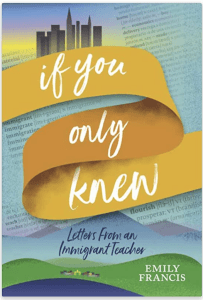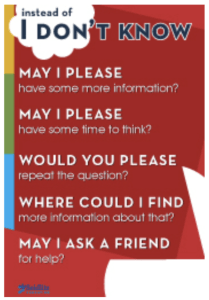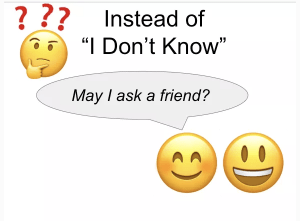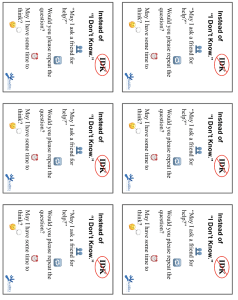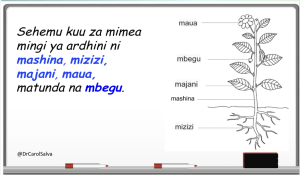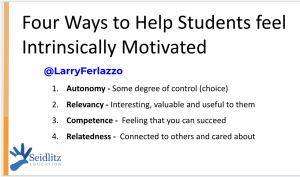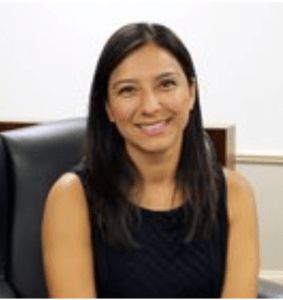 In today’s show, the author of If You Only knew; Letters from an Immigrant Teacher is joining us. That’s right, THE Emily Francis is here to help us talk and think about free voluntary reading. We get some amazing ideas from Emily but this show offers so much more than that! These notes are a mixture of links, my reflections and quotes from Emily. They also include a short excerpt from her book that I read during the podcast.
In today’s show, the author of If You Only knew; Letters from an Immigrant Teacher is joining us. That’s right, THE Emily Francis is here to help us talk and think about free voluntary reading. We get some amazing ideas from Emily but this show offers so much more than that! These notes are a mixture of links, my reflections and quotes from Emily. They also include a short excerpt from her book that I read during the podcast.
Listen to “BAP112 Free Voluntary Reading ft Emily Francis” on Spreaker.
You listen here or in your favorite podcast app. You can watch the YouTube version or just browse through some of the resources below.
And if you want to just run over and get this book, you can do that on Amazon or on the Seidlitz Education website. You won’t regret it!
Emily is the perfect guest for this show because she is a shining example of what is possible with passion and persistence. On this show, we usually focus on the most marginalized student, and that is a student who among other challenges, my not yet have literacy in their heritage language. How do we help that child while helping the entire class? Emily is still in the classroom so educators stop and listen when she shares. And she is constantly sharing!
In her own words, “Thank you so much for having me. It’s always a pleasure. Boosting achievement is always part of my teacher tool kit, and it’s always in my heart. You always bring in excellent tasks that we can take away to better serve our multilingual students. So if know me or you don’t, I am an ESL teacher. I teach English as a second language at the high school level is my fifth year, but it is my 11th year teaching. It is my 19th year in my district as I was a teacher assistant before becoming a teacher. It is at the High School level where I found my passion, where I found my calling, where I found where I belong. …. If you know me on social media, I’m always sharing what’s happening in the classroom, on campus, in our community, anything that will highlight the excellence that our ELLs can reach.”
PLC4Newcomers
#PLC4Newcomers is a professional learning community that has come together to share and learn from other newcomer teachers. Emily founded this group and keeps it alive with strong guest speakers and regular learning opportunities through synchronous asynchronous connections. You can search the hashtag on Twitter, Facebook and Instagram.
Be sure to subscribe to Emily’s blog so you don’t miss her updates on this and other happenings.
Free Voluntary Reading for Newcomers
I asked her to respond to people who say that free voluntary reading is not appropriate for students who are not yet literate in their heritage language or the target language of English. Emily’s response was, “I think the people who have those comments, I don’t think they have seen it in action. … they need to see what it is that they’re doing. So if you are raising your hand saying that free voluntary reading doesn’t work for newcomers because they don’t have, “ the literacy skills you need to” go and see what is really happening. In my classroom, I had twelve newcomers sitting there, opening a book and reading books. Saddleback is my Go-To! Just open that box and they just go at it picking books that they find interesting. Sometimes it’s just the cover that it might be interesting. ‘Hey, there is something that looks like my country, let me read this book.’ As long as it’s something that the student can relate to, and as long as it’s something that the student can share that can make a personal connection, then the student can sit down and read it. The most important thing is that they can turn around and share. You know, so I have had newcomers who may not read the entire book. They may read one page. Maybe that whole class time they took to read that one page, but that one page can turn into, ‘Hey, I made a personal connection. Hey, let me tell you, let me tell my partner what I read.’ Because there were so many choices for them. And that student finds that one book that he or she can connect with. There was one time where one of my students found one about a cell phone, you know, ‘Oh my gosh, I love cell phones! What is this book about?’ And that was it. That’s all that student needed to be able to sit down and read. So again, I’m the type that I never teach an entire book. I’m all about opening the book and finding what connects with you. And it works. And it works.”
Honoring Students
Emily also shared about the importance of autonomy and honoring our students’ interests. She explained that offering choice and grade-level text is about dignity and humanity. The audio episode is so powerful to hear Emily describe what her students get out of connections with different types of text.” During this part of the conversation, we talked about the work of Dr. Stephen Krashen who is one of the leaders in research on second language acquisition. His work recommends that we find compelling text and then allow students to choose what they want to read. Emily’s work is right in alignment with Dr. Krashen.
Ideas for Free Voluntary Reading with Newcomers
Emily described different ideas including:
- word banks that are generated with the students based on their interests.
- pairing up students who read similar texts so they can share about what they are reading.
- developing a positive classroom culture
- fostering connections with our students and between them.
- Making sure they feel valued.
Posting to Social Media and Raising the Bar
I thanked Emily for sharing what her students are doing in class. Her social media posts are important for my learning journey. She describes her intent this way, “So the expectation. We have to set the bar as a language acquisition expert, we have to set the bar. When I post, hey, look at all the writing my newcomers are doing, look at the presentation. Or here’s a video of Louise reading in English. Then a content teacher might see that and say, well, if he’s doing that in her class, then he’s going to do that in mine, too. So, we set the bar. We do that as language acquisition experts.”
Getting to Know our Newcomers
Emily gets busy on DAY ONE engaging students in books and learning more about them. Her explanation was “At the beginning of the year you can do ‘I am’ poems. For example, I am Frijoles, I am Tamales, I am Mexico, I am Soccer. When you make activities that you get to know what’s interesting about the student, and then you post it in the room, that gives you ideas of what kind of books or what kind of magazines to bring in. So, there is some pre-work that needs to be done before you provide text. That way you can actually provide what they really would like to pick from.
Using Emily’s Story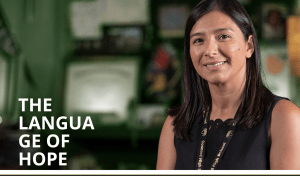
I first heard Emily’s migration story when she was brave enough to write it down and then contacted me and Tan Huynh to get our opinions about publishing the post. This post was compelling for me and for my students. We read together by chunking the text, tracking print, and stopping often to discuss what was happening. As always, I allowed Google Translate to get the gist but we did our shared work in English. You can do this type of activity with Emily’s story right here.
If You Only Knew: Letters from an Immigrant Teacher.
If I could recommend one book this year for your classroom library, this would be it. When I told Emily how much the book meant to me, she said “I always have to say I thank you, and I hope you have read the acknowledgements, because I do mention you there. I published my blog about my personal life because you encouraged it. And then I got a phone call from John Seidlitz because you mentioned me at the table. So, I have so much to be grateful for you sharing about the possibilities, and reaffirming my story. Because as immigrants, it comes to a point when that story that we have kept inside of us, unvalued and unaffirmed, needs to come out. And sometimes it comes from people like you, like, hey, say your story is important, or sometimes it’s through text. I want to read a book that I’m going to say, oh, my goodness, this is my story. And so that’s my hope behind the book. So, when John Seidlitz and my editor Sarah Welch, sat down with me to talk about my book, we talked about the memoir version. Hey, here’s Emily telling her story…and it wouldn’t flow. It’s just the story of Emily. I don’t know. It wasn’t juicy. It wasn’t what we really wanted to until we started mentioning, okay, my story is like so-and-so in this area. I started retelling students stories. And there you go. That was the key, the mixture, the intertwining of my story with the students. Centering students in the book. It wasn’t about Ms. Emily Francis. It was about students and their teacher. That relationship that we have built. I’ve got to learn a lot about my students through activities like I just mentioned earlier, like the I Am poems or readings, and students will come up to me and tell me how they relate to the text. So, all of these students identified in one way or another to me, and here am I sitting, looking at them and saying, oh, my gosh. I experienced what Sarah experienced. I am experiencing what Oliver is experiencing and those connections that I was able to make with students, that’s how the book ended up being letters to students.
There are eight letters in the story, and in each letter, there’s a theme that evolves. It could be immigration, it could be family separation, it could be addiction. So many things that come up throughout the chapters. But if there’s that one chapter that a student opens up and says, ‘This is me, and I can’t wait to tell the world about my story because I just read it in a book and I need to tell the world.’
So that’s one of my hopes, that a student can see this book as a mirror. And then again, those students or teachers who have never experienced anything like this, like the pictures you were just showing about teachers in South Carolina reading the stories, they don’t know what it is to cross a border. They don’t know what it is not to have anything to eat. They don’t know what it is not to be with your mother for several years. They don’t know what it is to take care of children at the age of 13. So, when they read something like this, my hope is that they have a light will go on and say, ‘I have students like that, and I need to do something about that.’ I have never experienced it, but I just read what it is to be sitting in that classroom, longing to be part of the classroom, longing to be someone, longing to break cycles, longing to be somebody. And that teacher can become that mediator.
That teacher can become the hero that student needs to reach the possibilities. So those are my hopes.”
I always get emotional when I hear Emily talking passionately about teachers or students. I told her that I loved this because books can be so powerful and can offer all of us that perspective. They offer us a different world. They can transport us. They open our minds.
As soon as Emily was brave enough to tell her story, it had an immediate impact on others. That day it had an impact on me and it had an impact on Tan. When she asked my opinion about what she had written for a blog post…I can’t even tell you the effect it had on me. I was blown away. I said, Yes. Right now. Right now! I thought, “This is going to be big. This is so important.”
And it was big. Emily has continued to share her story, she has also gone on to several speaking engagements bringing people to tears and stoking advocacy from her keynote presentations to being featured on the Ellen show.
She is such an example to everyone. It is such a powerful text because even so many young people would not have this type of experience, right? But through her book, she is giving it to them. The book offers us so many things! Teachers should be able to use it to teach about Mindset, a person’s value, Funds of Knowledge and more.
I recently published my dissertation on why SLIFE (Students with limited formal education) might drop out or continue in high school and graduate. One of the major themes was how valuable they were made to feel. It was “Degree of Esteem” that we held them in. So even though they may not understand the words, you know, when someone doesn’t value you, you know it. When I mentioned it, Emily had some things to say about this. She responded with “Students will always have a story to tell about the campus they attended, whether it’s a good story or a bad story. And what do we want our students to tell about? If I belong, if you created an environment where you made me feel like I belong, I’m going to have a good story to tell about you, your classroom, and your campus. If I did not, then I will have a story, but it won’t be a pretty one. It won’t be a good story. Your name will be out there today. I can tell you I have nothing good to say about Martin VanBuren because I never felt like I belonged. …that sense of belonging, it’s key for our students. Even if they don’t graduate, because I’ve had students who just didn’t make it. They made 21. They did not graduate, but they left my campus with a sense of understanding that they have a place in society, that they can walk through a community college and get a GED and move on with their lives, because they know their value.”
They know that they can contribute to our society. So it’s really not about handing them that diploma. It’s about how do we make them feel? What place do they have in our society? – Emily Francis
I shared with Emily that she and others continue to challenge my mindset. I shared that someone asked me why our newcomers don’t have a space on Student Council and I had no reply. These are the moments I need to help me reconsider the regard in which I actually hold newcomers. We have to keep raising the bar in or minds and Emily is here to help us do that.
Excerpt from Emily’s Book
Emily allowed me to read just a few paragraphs from the book. This is the part that I read. In this letter Emily is connecting to a student’s story and telling them what it was like when she first got out of high school and applied for different jobs.
“…Even when they didn’t require a diploma, there was always something else that held me back. I remember applying for jobs at banks and thinking how cool it would be to work in a nice, clean place like that. Some banks I applied for required a test to show how fast you could count money and process information. I’m not sure if it was my lack of confidence or my lack of English proficiency, but I was never able to pass those tests either. Another job I applied for was at an insurance office. All I was supposed to do was answer calls and sell the product. When I started practicing for the position, I was intimidated by the people on the other side of the line. I remember thinking, what if they ask me something I can’t understand? What if I can’t remember everything I’m supposed to know? So I called the next day and I told the office manager I wasn’t interested.
After that phone call, I realized I was not ready for the workforce. Even though I had completed my years of high school, I was not ready to contribute to society. I was scared and confused. I felt useless. But you know, Marco, we shouldn’t need a diploma to feel useful. We shouldn’t need a diploma to feel prepared to serve our society. What we need is the feeling that we matter, a sense of belonging in this country, a clear idea that who and what we are can impact those around us.”
THIS IS WHY YOU AND YOUR STUDENTS WILL LOVE IT!
Emily responded with “That’s a reflection of what happened when I was interviewed as a teacher assistant. After working so many years as a cashier, I was interviewed as a teacher assistant. And what gave me the idea that it could work, that I could be that teacher assistant is the validation of my story, the recognition that what I have experienced was enough, that what I had gone through throughout these years as an immigrant, as a student, was enough for me to contribute to society. And that’s all I needed to have that mind shift that I can be more than scanning a grocery store.”
Emily and I have talked about being a cashier and there is nothing wrong with that job. It is a noble profession, for sure, but she had in her heart that she wanted to be a teacher. We just want the students to understand that all of us can always go further. We can always look forward. That is the message I get from Emily is that she had that realization that she actually could do more. Always.
I loved her response to me. She said, “It’s doing whatever you’re passionate about, whatever it is that you feel like I can contribute to society, whether it’s cutting hair like my sister, whether it’s running an 18-Wheeler business like my other sister, whether it’s a realtor as apartments as my brother. I mean, we all have different choices. You are contributing, but at the same time, the core of that contribution is who we are not versus who people want us to be.”
Thanks so much for listening to this episode of the Boosting Achievement ESL podcast. I’m super grateful to Emily. She adds so much to the field and so do you. I hope you know if you’re supporting educators or supporting students as a teacher, how important you are, how valuable you are. I know a lot of times it might feel like you’re not doing enough and there’s not enough time, but I think this episode with Emily, I hope it helps you remember how important it is to make a student feel valued that has such a big impact. And yes, we are just a piece of their journey, but it’s an important piece and you can have a lasting impression. That’s going to be one of the most powerful things you can do.
So if you’re listening to Education Radio, I’m pretty sure that you are passionate about supporting students and multilingual learners if you’re listening to the show. And so I want to thank you. Thanks for helping me with my journey and thanks for everything you’re doing.
All right, take good care.
Bye.
